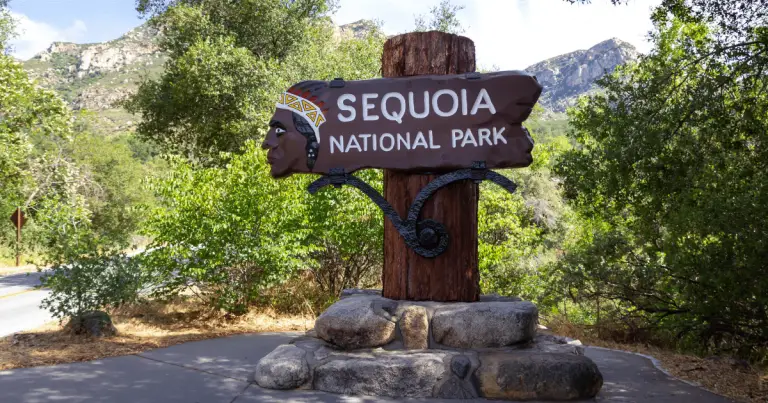Hiking Eagle Peak Yellowstone: Scenic Escapes
In Yellowstone National Park, surrounded by craggy mountains and clouds, lies a majestic peak known as Eagle Peak. At an elevation of 11,358 feet (3.46 km), Eagle Peak stands as the tallest peak in the Absaroka Range, overflowing with awe-inspiring views and unforgettable memories.

Location and parking
Eagle Peak is located in the north-eastern region of the Yellowstone National Park. It lies on the edge of the Absaroka-Beartooth Wilderness. For visitors who want to admire the beauty of Eagle Peak in Yellowstone, the two closest trailheads are the Pebble Creek Trailhead and the Slough Creek Trailhead. Visitors can park their vehicles at the Slough Creek or Pebble Creek Campground areas, accessible from the park’s Northeast entrance.
Height and Wildlife
Eagle Peak stands 11,358 feet (3.46 km) above sea level. As visitors hike up towards the peak, they are likely to encounter a wide range of wildlife in their natural habitat. From grizzly bears, black bears, wolves, and moose to bighorn sheep, mountain goats, and elk, the wildlife is always thriving and in full display in this region of the park.
Hiking Routes and Tips
Yellowstone’s Eagle Peak offers several hiking routes for visitors to choose from. The most commonly used routes are the Pebble Creek Trail and the Slough Creek Trail. Both trails are approximately 15 miles (24.14 km) long round trip and have an elevation gain of 4,000 feet (1.22 km). Visitors should prepare accordingly for hot and cold weather, as temperatures can vary greatly even on the same day. You should also pack plenty of water, snacks, and sunscreen. Beginners should take on this trip with an experienced hiker and climb with caution.

What to expect and Interesting Facts
The trek to the peak is strenuous and challenging, but as visitors climb up the trail, the stunning panorama views they encounter will compensate for their efforts. The amazing view of the Absaroka Range coupled with the mountain air will take your breath away. Standing high above other peaks such as the Stoner Peaks and Yellowstone’s Electric Peak, it offers a bird’s eye view of the vast wilderness and its natural features. Another interesting fact about the peak is its name, which was derived from the Bald eagle, a ubiquitous bird species spotted across the park.
Frequent questions about the Eagle Peak in Yellowstone
Do we need permits to hike to Eagle Peak?
Yes, a backcountry camping permit is required if you plan on spending the night anywhere in the Yellowstone backcountry. You can obtain this permit from any of the park’s backcountry offices. It is also recommended that you carry a personal ID and a copy of any additional relevant permits or licenses you might need. Please note that park rules and regulations are subject to change, so it is always a good idea to check the latest guidelines on the Yellowstone National Park’s official website before you plan your hike.
What is the Final Assent to the Eagle Peak in Yellowstone like?
The final ascent to Eagle Peak is a thrilling and challenging endeavor. As you climb the last few hundred meters, the trail becomes steeper and more rugged. Loose rocks and steep cliffs require careful navigation. Despite the taxing climb, the reward is absolutely worth the effort. You’ll stand at the highest point in Yellowstone, with a panoramic view of the park’s diverse and stunning landscapes. The untouched wilderness, the captivating sight of the Absaroka Range, and the serenity that comes with such elevation will leave you in awe. This exhilarating experience is a testament to the grandeur of nature and a moment of triumph for every hiker who makes it to the peak.
Can we encounter a lot of people during summer months?
During the summer months, Eagle Peak can be quite popular among outdoor enthusiasts, so you can expect to encounter other hikers during your trip. However, given the challenging nature of the hike and the length of the trails, it is unlikely to be overly crowded. Always remember to respect other hikers and maintain appropriate social distance. Be aware that the number of visitors could vary year by year, and it’s always a good idea to check the National Park’s latest updates before planning your hike.

Conclusion
Eagle Peak is a wonder of Yellowstone National Park. To experience Yellowstone at its best, visitors should put Eagle Peak on their bucket list for their trip to the Absaroka-Beartooth Wilderness. The journey to the peak can be challenging, but with the right preparation and an experienced hiker, the views from the top of the summit are incredibly rewarding. Whether it’s for adventure, wildlife spotting or to quench your thirst for an adrenaline rush, it’s a trip worth making once in your lifetime. Plan ahead, stay safe, and make sure you adhere to the Park’s Leave No Trace principles to help preserve the beauty of this natural wonder for years to come.






